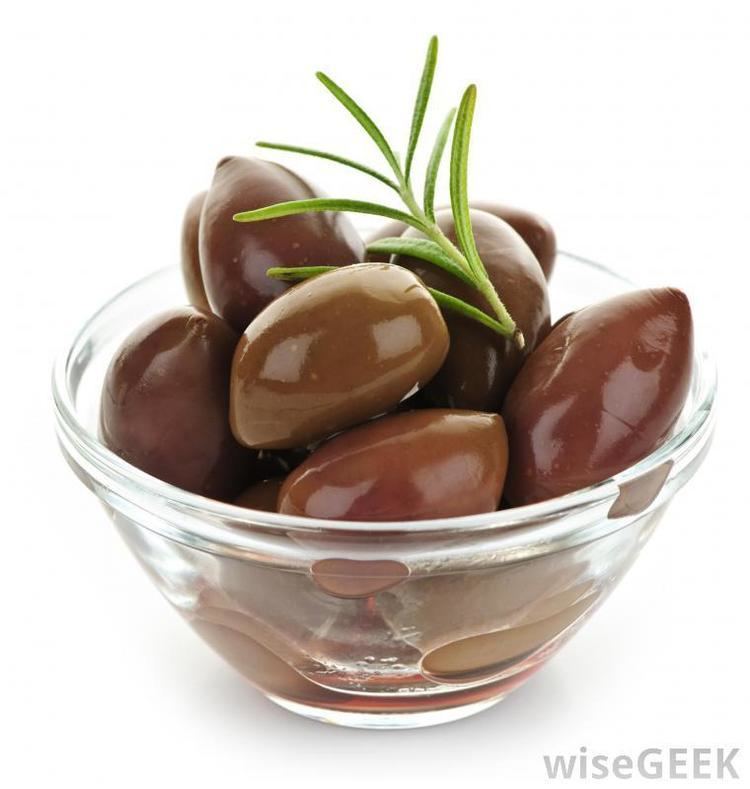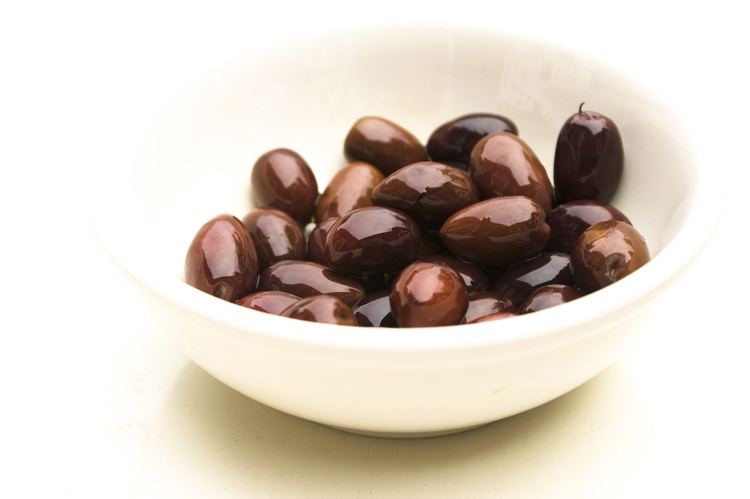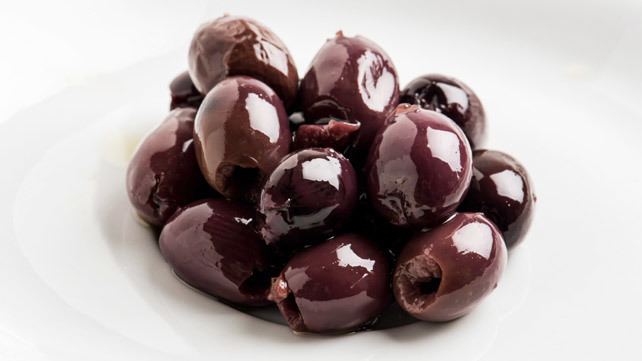Color of the ripe fruit Dark Purple Oil content 6.8% | Use Table and oil | |
 | ||
Similar Feta, Greek salad, Red onion, Romaine lettuce, Olive | ||
Benefits of kalamata olive
The Kalamata olive is a large purple olive with a smooth, meaty texture named after the city of Kalamata in the southern Peloponnese, Greece. Often used as table olives, they are usually preserved in wine vinegar or olive oil. Kalamata olives in the European Union are protected with PDO status. Olives of the same variety grown elsewhere are marketed as Kalamon olives.
Contents

Description
Kalamata olives are grown in Kalamata in Messenia and also in nearby Laconia, both located on the Peloponnese peninsula. They are almond-shaped, plump, dark purple olives from a tree distinguished from the common olive by the size of its leaves, which grow to twice the size of other olive varieties. The trees are intolerant of cold and are susceptible to Verticillium wilt but are resistant to olive knot and to the olive fruit fly.
Kalamata olives, which cannot be harvested green, must be hand-picked in order to avoid bruising.
Preparation

There are two methods of preparing Kalamata olives, known as the long and short methods. The short method debitters the olive by packing them in water or weak brine for around a week. Once complete, they are then packed in brine and wine vinegar with a layer of olive oil and slices of lemon on top. The olives are often slit to decrease the processing time. The long method involves slitting the olives and placing them in salted water in order to debitter them, a process that can take as long as three months. Levels of polyphenol remain in the olives after processing, giving them their slightly bitter taste.
